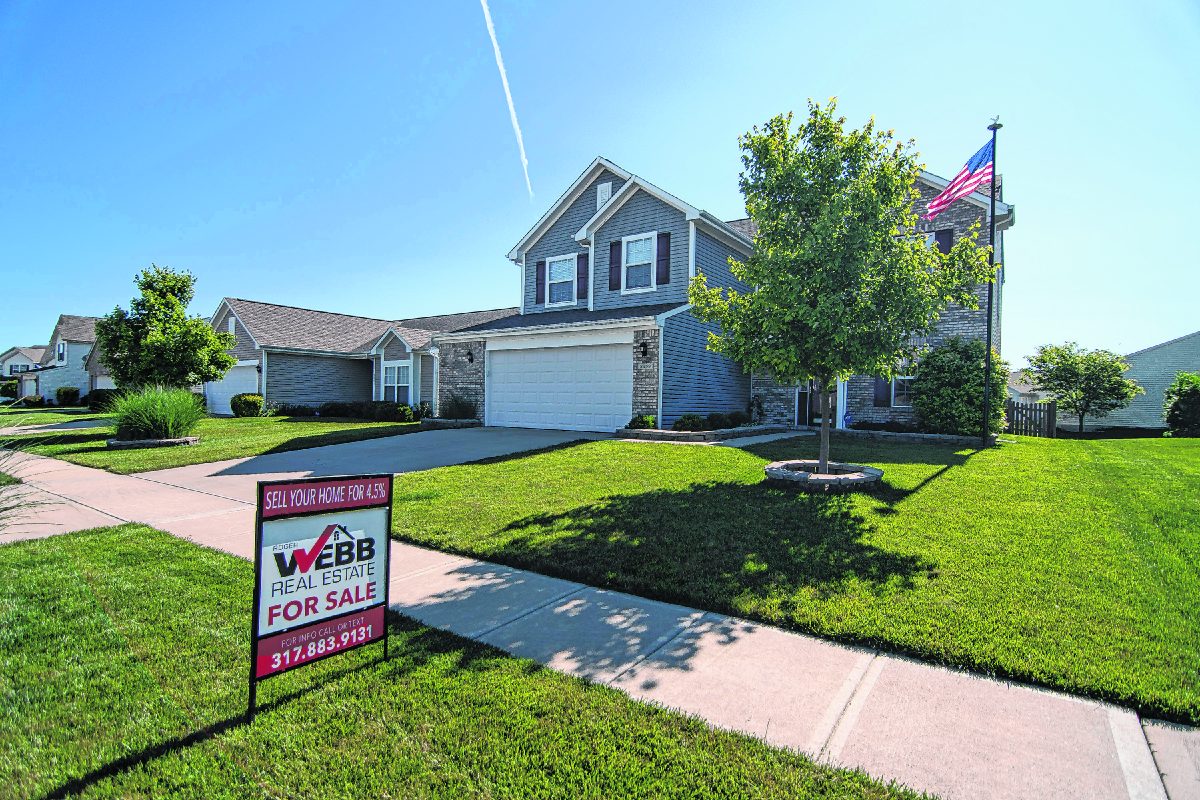In May, the housing market in Johnson County saw a height it had never seen before when the median sales price hit $200,000.
Not even the housing boom of the mid-to-late 2000s brought that median sales price. In December of 2007, when that market was near its pre-recession peak, median sales prices rose to more than $150,000 in Johnson County, according to the Metropolitan Indianapolis Board of Realtors, which is now known as MIBOR Realtor Association.
The recent numbers are an indicator of the rapid population growth that has hit not only Johnson County, but the Indianapolis metropolitan area as a whole. The population in Johnson County increased by 44 percent between 1997 and 2017.
[sc:text-divider text-divider-title=”Story continues below gallery” ]Click here to purchase photos from this gallery
With more people moving in, the amount of available housing has decreased, and with a lower supply brought higher demand and higher prices, said Jamie Barb, MIBOR’s vice president of marketing and communication.
Since March 2010, when the median sales price in Johnson County was near a recessional low at $118,500, prices have increased by about 69 percent, according to MIBOR.
“There’s not as many houses for sale,” Barb said. “Inventory decreased quite a bit from the number of houses available in 2006, it’s almost half of what we used to have.”
Only 1.4 percent of Johnson County homes are vacant, compared to a national median of 2.5 percent, according to an annual report published by the U.S. News and World Report.
Despite record prices, the housing market might be stabilizing. The housing market grew 2.6 percent between May 2018 and May 2019, the lowest percentage of year-over-year growth since 2013 to 2014, according to MIBOR, which listed a decrease of 5.3 percent in closed sales.
Between May of 2017 and 2018, there was an increase of 7.9 percent in closed sales and a 7.4 percent increase in the median sales price. The market will remain strong but won’t continue to grow at the same pace, said David Neu, Managing Broker at RE/MAX in Greenwood.
“I don’t think prices will decrease. I think we’ll see things in a more balanced market in which we will see prices similar to a more normal market prior to the recession,” Neu said. “Prices will continue to increase because of the demand. The increase won’t be as dramatic as we saw last year, but it’s still a very strong market without a doubt.”
The balancing started in November, when people started buying houses for about the same price or less than they were originally listed, Barb said.
“Prices were going up, up, up, up and up since 2012 and now they’re starting to stabilize. The closed price is close to the original list price,” Barb said.
“As prices continue to increase, at some point they’re starting to settle down. It’s similar across the country.”
Other suburban areas such as Hendricks and Hancock counties saw increases of 14.1 percent and 10.5 percent respectively in median housing value, but that might be a result of those counties feeling a delayed effect of what Johnson County is experiencing now, Barb said.
Earlier this year, Greenwood approved the construction of two Arbor Homes developments, which will bring the city 94 new houses on Combs Road between County Line Road and Main Street. Another new subdivision has been approved in Franklin.
While people are continuing to move into Johnson County, home builders are attempting to keep up with the growth by building new houses, increasing supply. Through May, Johnson County communities issued 321 building permits, more than were issued during all of 2010. The five-month total for the number of permits issued is greater than totals for the first five months in every year since 2014, according to data from the Builders Association of Greater Indianapolis.
The number of new houses built in Johnson County might not match the output in 2005, when Johnson County communities approved more than 1,500 permits, but the market does not exhibit some of the warning signs of collapse that accompanied the previous housing boom, Neu said.
“We’re not seeing the aggressive, subprime products that we saw then, with people buying houses with no money down and low credit scores. We see the mortgage industry being a little bit more conservative. The overall population of buyers are more conservative,” Neu said.
“Definitely, buyers are educating themselves more, and being more conservative in their approach to buying.”
[sc:pullout-title pullout-title=”By the numbers” ][sc:pullout-text-begin]
Median sales price in Johnson County, May of each year:
2010;$124,000
2011;$122,145
2012;$120,000
2013;$135,750
2014;$135,000
2015;$151,500
2016;$160,000
2017;$181,725
2018;$195,000
2019;$200,000
Source: MIBOR Realtor Association
[sc:pullout-text-end]





